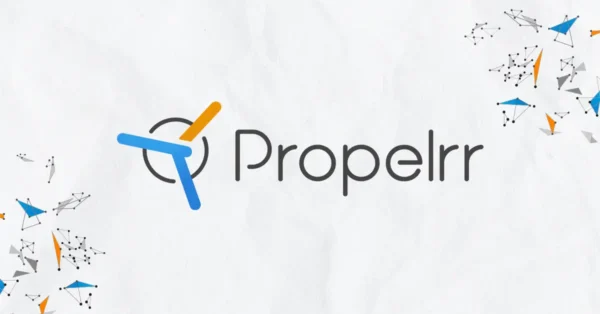Customer Insights Analysis – What is it and its Strategic Uses?
Digital Marketing 11 min read
We use cookies to personalize content and ads, which enables us to analyze our traffic.
If you continue to use this website, you consent to the use of our cookies. Find out more here.
Type it below, and we'll show you what we've written about it!
Home Blog Digital MarketingHow to Start a Successful Ecommerce Business in 8 Easy Steps
Digital Marketing Web Development

In these unpredictable times, many businesses scrambled to learn how to start a successful ecommerce business, and for good reason. After all, the COVID-19 pandemic shut down countless businesses in the Philippines over the past year-and-a-half. However, one industry rose above the rest, riding the wave of potential of 2021: ecommerce business.

Online businesses have become the most popular business blueprint for companies and brands everywhere. Due to the pandemic locking everyone indoors, the ecommerce industry boomed over the past year-and-a-half, becoming the lifeblood of established and niche brands all over the country.
If you’re new to all of this we, as a veteran digital marketing company in the Philippines, offer you concrete steps on how to start a successful ecommerce business amid all the existing competition. This guide on how to start a business will equip you with the right framework to drive success for your small company or brand this year.
Jumpstart your digital journey in a few doable steps. Make sure to refer to this guide on how to start an ecommerce business successfully, and achieve big wins in your digital space in 2021.
Anyone who’s starting an ecommerce company needs a reliable, battle-tested digital marketing framework that can be scaled in any situation. This simplified eight-step guide will help you figure out how to start up an ecommerce business, and will lead you on a path towards digital victory.
The first step to starting your online brand is to determine your identity as an emerging company. Who are you? What do you want to sell? You may already have the answers to these questions; just make sure to write these down.
If you’ve already decided on what you want to sell, the next question to ask is why do you want to sell these products or services? What is your mission and vision for offering them online? Answering these questions will help you uncover your “why” and provide a better idea about your brand and target market.
By determining who you are, what you want to sell, and your mission and vision, you’ve just taken your first steps towards identifying your brand. By identifying your target market, you take the next necessary step into starting a successful ecommerce business.
The next thing you will need to do is to set your objectives. To do so, you will need to know your objectives, key performance indicators (KPIs), and targets. These elements will help you ideate a digital measurement model that can help you track your success and reach your overall goals.
Your goal is the executable and value-delivering reason your company exists, in the first place. These reasons include sales, revenue, engagement, and more. To achieve your goals, you need to identify specific objectives from which you develop sound, data-driven, and strategic campaigns.
List down your objectives as concrete steps that will help you move closer towards achieving your bigger goals. Then, set your KPIs, i.e. numerical values you will use to measure your performance against your identified objectives. So if your objective is to accumulate leads and meet your goals to increase online brand awareness, your KPI can be the “number of leads” you collect.
After setting your KPIs move on to your targets. This is your predetermined numerical value, based on your KPIs, that will indicate the success or failure of meeting an objective. For example, if your objective is to collect leads, and your KPI is the number of leads you collect, your target can be 100 new leads every month.
With this quick rundown of the elements that fall under your company’s objectives, ask yourself:
Answering these questions will help guide you on how to start a successful ecommerce business for 2021.
Now that you know who you are and what you want, you next need to choose where and how you’ll get what you want. What website infrastructure will you use to run your online brand? What digital channels will you operate on?
In choosing the platform on which you’ll operate your company, consider one that is easy for you to scale easy for your customers to navigate, as well. It should be customizable, scalable, and flexible, letting you make the buying and selling process easy for everyone.
Given your objectives and target market, consider what your website will need to make things happen for your brand. Where does your target audience usually hang out? What do they need to complete a conversion for your brand?
Here are a few other considerations for you when choosing your ecommerce platform:
Whether you choose an existing marketplace or your own platform, make sure to consider how your digital infrastructure and channels will serve your customers and your brand in the online landscape.
It’s now time for you to customize your ecommerce site. However, this process isn’t as straightforward as you may think. This is because your site customization isn’t necessarily dependent on what your brand wants. Rather, it also depends on what your customers want and need from your brand.
Excellent customer experiences should be at the forefront of your ecommerce design. When customizing your website, you’re not just creating an online space where you can sell your products and services, but you’re also curating a customer journey that serves your audiences and earns you conversions, in the long run.
How can you optimize your site’s user experience design to drive valuable customer actions? Customize your ecommerce website to cater to your audience’s needs. This helps you build trust and long-term client relationships. How your business appears online sends an impression to your clients; so always be sure to make a good one.
In addition to curating your website for your customers’ unique needs, you should also communicate to them your UVP. Why should your customers care about your brand? The answer to this question goes back to your identity and objectives and will be communicated through your copywriting and content.
Ask yourself: what makes your brand stand out, and how will you let your audience know about it? You need to explain to yourself and your audience why your products and services are the best answer to your clients’ specific pain points. You can do this through clear headlines, informative content, and valid “proof of truth” material.
When it comes to content marketing for your ecommerce business, make sure everything you write and create communicates your UVP clearly. Also, make sure that you can back your claims with hard pieces of evidence such as brand statistics, testimonials, and company accolades to further fortify your UVP.
Now, you’re stepping into the nitty gritty of how to start a successful ecommerce business: strategy and execution. What do you plan on doing to start your online business journey? Look back to your brand, objectives, and target market. All of these will be unique to your company; so your strategy and execution should be unique to your needs, too.
Below are some best marketing tips and strategies to execute your overall business objectives, which you can anchor to the unique needs of your customers and company:
Plan out strategies and executions that best translate your brand objectives into resounding results. Make sure to go back to your mission and vision, customer needs, and current platform to curate plans specifically for your online brand.
Once you’ve strategized and executed plans to jumpstart your company, the next important step is to analyze the data you gathered from your executions. Data analytics is a crucial part of your ecommerce business success. This can make or break the way your brand sustains itself, in the long run.
Data are crucial to your online growth. You can uncover points for improvement, optimize strategies and executions, and innovate revenue models through the right data analytics. You can also discover patterns and trends among your customers, to curate your channels for their conversion convenience.
For example, optimizing your ecommerce for search requires a lot of data analysis. You need to understand your search engine’s algorithm, review your customer journey, and optimize your website for best overall efficiency. By analyzing your data, you can achieve all these things to sustain your brand’s progress over a longer period of time.
With data analysis in place, you now need to scrutinize customer feedback, then iterate your business based on critique and data. Doing so will allow you to optimize the necessary aspects of your ecommerce business.
In this step-by-step guide, you may have realized that building a successful ecommerce business from scratch can take a lot of time. But making your business accessible online just requires a few simple steps and a little bit of initiative. Although it may seem easy, sustaining it is a different story altogether. Here you are required to maintain constant scrutiny, iteration, and optimization of your work.
So make sure to find a reliable partner for your long-term online business journey. Drive your digital journey differently with a data-informed digital marketing agency that can help you find success during the pandemic and beyond.
If you’re starting an ecommerce business this year, expect your journey to be more of a marathon than a sprint to the finish. There’s a lot that goes into creating and sustaining a digital brand, especially beyond the pandemic.
With this in mind, below are some key takeaways, as you start your digital journey:
Ready to start your online business journey? Visit Propelrr’s Facebook, X, or LinkedIn spaces for expert advice and excellent resources on starting your ecommerce business adventure.
Choose topics you want to get regular updates on:
Thank you for downloading our free template.
Expect fresh digital marketing resources delivered straight to your inbox every week.
The email address used was already subscribed to the newsletter.
Sign up for our newsletter to get the latest marketing tips and best practices delivered to your inbox.
